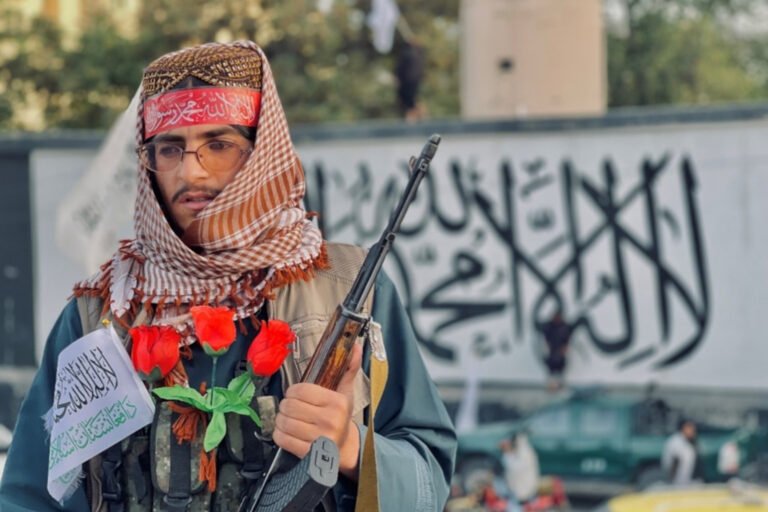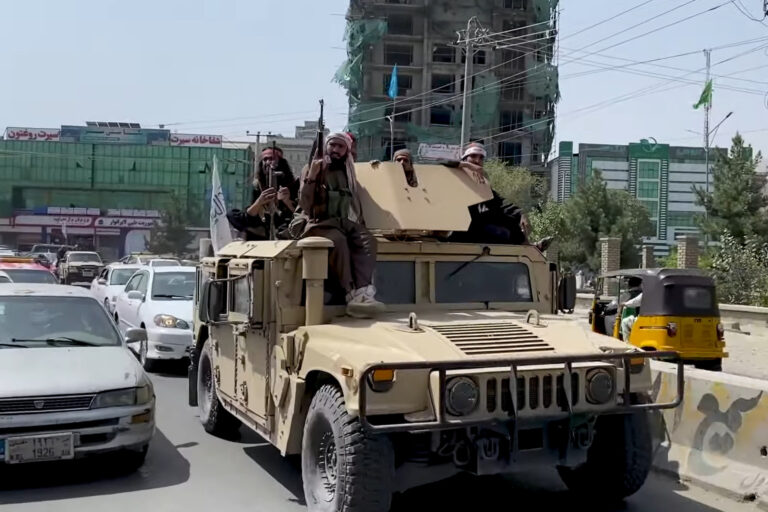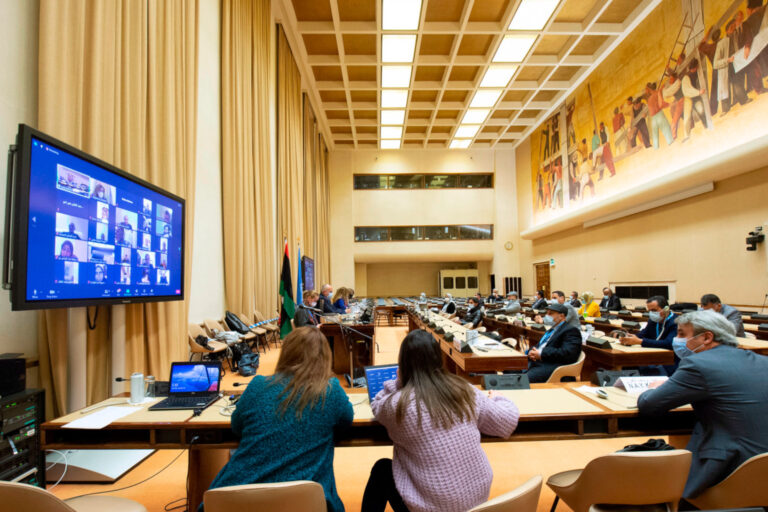If contention describes a state of sustained, massive protest combining peaceful, disruptive, and violent tactics, then the decade of the 2010s may be considered the most contentious in Chile’s history.[1] The decade’s contentious dynamics seem more spectacular and unpredictable considering Chilean citizens’ previous feeble collective action. Chile transitioned to democracy in 1990 following a long and bloody dictatorship led by General Augusto Pinochet, in power since 1973. As typical of Latin American military dictators of the time, Pinochet repressed labor unions, leftist and centrist parties, student movements, and any other kind of autonomous organizational spaces, replacing them instead with regime-controlled organizations. Along with the atomizing consequences of varied market reforms, the authoritarian regime left a weakened civil society.[2]
The Concertación por la Democracia, the center-left coalition that governed Chile between 1990 and 2010, created an alliance with labor, student, and other social movements which successfully ousted Pinochet. Once in power, the Concertación did not want further trouble in the streets, factories, and universities, and forestalled protests by issuing mild concessions and promises of future reforms. The strategy worked. During the 1990s and most of the 2000s, social movements did not much interfere with the governing tasks of the Concertación.[3]
By the late 1990s, however, there were some telling signs that circumstances were changing. The Mapuche indigenous communities rebelled against energy projects that threatened to devastate their lands and natural environments. In 2006, high-school students en masse seized buildings and staged marches in an effort to change national education laws and obtain short-term benefits.[4] The contentious decade officially kicked off in 2010 with campaigns by environmental groups against energy projects in the South and was followed by student demonstrations during 2011—the largest marches since the dictatorship. Student protests declined after 2013 but prompted important policy changes in education.[5] Their more enduring legacy was the creation of a “social movement society” in Chile.[6] This is a society in which many groups with a wide array of grievances—not all of them leftist and progressive—gather to redress these grievances through protest action.
Thus, during the contentious decade, Chile saw the formation—or reinvigoration—and consolidation of movements for the homeless; workers and pensioners struggling for better pensions; the ill and their relatives pushing for more state funds for the health system; local residents concerned with environmental hazards; and, more recently, women. To this, we should add the labor movement, which, though fragmented, still accounts for about 40 percent of Chile’s contentious activity.[7]
The “contentious decade” had its coronation with the October 2019 uprising – a crescendo of protests of all kinds sweeping across Chile, precipitating unprecedented doses of violence, from sackings and lootings, to fights with police officers. The uprising, dubbed the “Chilean spring,” was poorly controlled by the government.[8] Repression attempts by police officers left many blinded or dead by their bullets. Representatives of international human rights organizations flew to Chile and confirmed many instances of police abuse, urging police reform.
The uprising terrified political elites with the threat of a national collapse, moving them to agree to something considered impossible under non-contentious times: to start a process to change the country’s constitution, a document approved during the dictatorship in 1980 but amended several times since. In October 2020, a national plebiscite ratified the people’s choice to have a new constitution with 78 percent of voters’ support. In 2021, constituents will be elected to draft a proposed constitution to be ratified again in a popular plebiscite. This may lead to the first constitution crafted in democracy in Chile’s history.
The experience of a “contentious decade” is, of course, not exclusive to Chile. The 2010s were the decade of the Arab Spring, the Occupy movement, amongst many other similar movements across the world. Scholars have often credited the expansion of the Internet and online social media as a powerful driver of increased contention on a global scale. However, this cannot alone explain the experience of countries who saw expanded internet coverage, yet did not undergo comparable contentious episodes. While domestic conditions vary enormously and help to explain national contentions, I would like to point to a general condition that holds for Chile and many other Latin American countries: the absence, or at least weakness, of centralized ideologies that can channel collective grievances into established political forces capable of reaching power and of making institutional transformations.[9] “Centralized ideologies” appear when a mass of followers endow a small group of leaders and organizations with the representation or incarnation of some higher value, doctrine, or moral tenet under which they are influenced to act. Centralized ideologies often serve to orient action and transform social demands into institutionalized forces.
The lack of centralized ideologies in Latin American stems from factors related to the end of the Cold War. During the Cold War, political ideologies were highly centralized. Popular and middle-class sectors in Latin America, Africa, and Asia had clear leaders (Mao, Castro), heroes (Trotsky), doctrines (Marxism, communism, socialism), and organizations (communist parties, vanguard movements, guerrilla cells). These elements made their struggle a meaningful one. The collapse of the USSR opened a vacuum in the Left’s ideological center of gravity. The Left of the 1990s could not simply raise a new model following the vertical and authoritarian format established by the USSR following the 1917 revolution. The result was the Global Justice Movement, a heterogeneous amalgam of organizations and networks that spread across the world—this time from South to North—and combined classic leftist concerns on equality and material conditions with newer ones about sexual diversity, indigenous rights, and environmental protection.[10] This new Left was more Gramscian than Leninist; it was keener on culture, identities, and horizontal conversations than on top-down mandates and revolution. Ideology remained vibrant but decentralized and hard to grasp.
Going back to Chile, this new Left is reflected nowadays in a diverse array of movements that share a broad criticism against neoliberalism but cannot articulate a common political front and are very distant from political parties. Their closest institutional expression, if any, is a new political coalition called “Broad Front” (Frente Amplio). Originally based on middle-class student constituencies, it fared extraordinarily well in the 2017 national elections and reached congress. Still, the Frente Amplio has faced considerable problems expanding its support bases to the popular sectors, in part because many perceive it as a coalition of better-off youth disconnected from “real” problems.
The events during 2020 suggest that the new decade may also be very contentious in Chile. The pandemic has made collective action more difficult all over the world due to lockdown measures that hinder massive seizing of public spaces. Nevertheless, it generated new grievances related to subsistence problems, unemployment, and economic anxiety. In Chile, the combination of the social uprising of late 2019 and the pandemic in 2020 has proved explosive for collective action. A work in progress[11] shows that the number of protests in Chile during the pandemic was higher than before the social uprising. Some groups—such as workers, women, and indigenous peoples—protest now more than before despite the organizational constraints for taking public spaces. We partially attribute this hike in protests to the legacy of the 2019 uprising, which left a mobilized society outraged with political authorities and police forces. How long will this legacy last? Will the 2020s be as—or even more—contentious than the 2010s?
[1] McAdam, Doug, Sidney Tarrow, and Charles Tilly. Dynamics of Contention. New York and London: Cambridge University Press, 2001.
[2] Carlos Huneeus. El Régimen de Pinochet. Santiago de Chile: Penguin Random House Grupo Editorial Chile, 2016.
[3] Patricia L. Hipsher. (1996). “Democratization and the Decline of Urban Social Movements in Chile and Spain.” Comparative Politics 28, no. 3 (1996): 273–297.
[4] Sofia Donoso. “Dynamics of Change in Chile: Explaining the Emergence of the 2006 ‘Pingüino’ Movement.” Journal of Latin American Studies 45, no. 1 (2013): 1–29.
[5] Sofia Donoso and Nicolás M. Somma. “’You Taught us to Give an Opinion, Now Learn How to Listen’: The Manifold Political Consequences of Chile’s Student Movement.” In Protest and Democracy, edited by Moisés Arce and Roberta Rice, 145–172. Calgary: University of Calgary Press, 2019.
[6] David S. Meyer and Sydney Tarrow. “A Movement Society: Contentious Politics for a New Century. In The Social Movement Society: Contentious Politics for a New Century, 1–28. Lanham, MD: Rowman & Littlefield Publishers, 1998.
[7] Matías Garretón, Nicolás M. Somma, Tomás Campos, and Alfredo Joignant. Informe Anual. Observatorio de Conflictos 2020. Santiago, Chile: COES, 2020.
[8] Nicolás M. Somma, Matías Bargsted, Rodolfo Disi Pavlic, and Rodrigo Medel Sierralta. No Water in the Oasis: The Chilean Spring of 2019–2020. Social Movement Studies (February 2020): 1–8.
[9] Michael Mann. The Sources of Social Power: Volume 1: A History of Power from the Beginning to AD 1760 (Vol. 1). Cambridge: Cambridge University Press, 1986.
[10] Donatella Della Porta, Massimiliano Andretta, Angel Calle, Helene Combes, Nina Eggert, Marco G. Giugni, Jennifer Hadden, Manuel Jimenez, and Raffaele Marchetti. Global Justice Movement: Cross-National and Transnational Perspectives. New York: Routledge, 2015.
[11] Nicolás M. Somma and F. Sánchez. Collective Action and Pandemics in Chile: The Reconversion of Social Movements and the Emergence of Survival Protests. In Progress, 2020.




